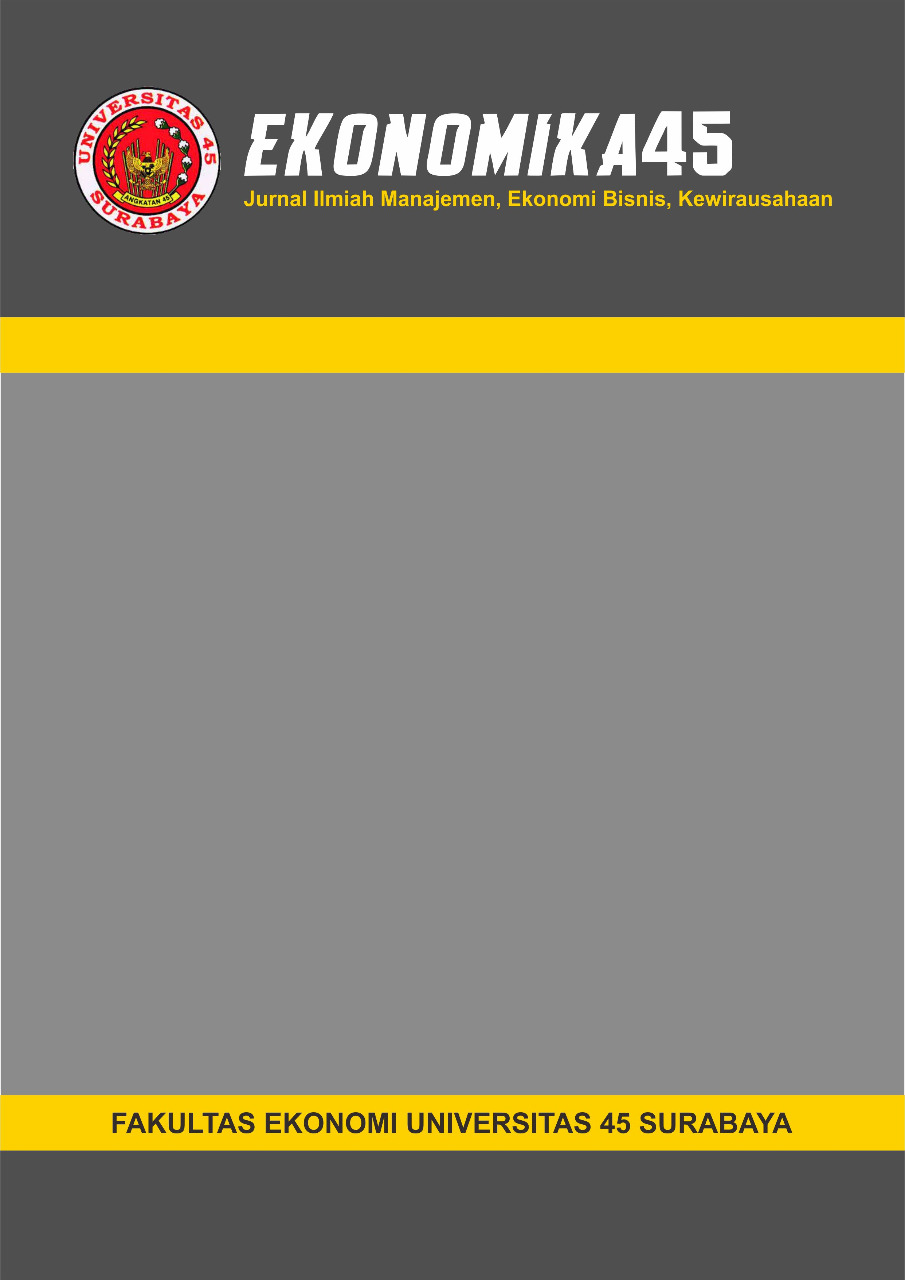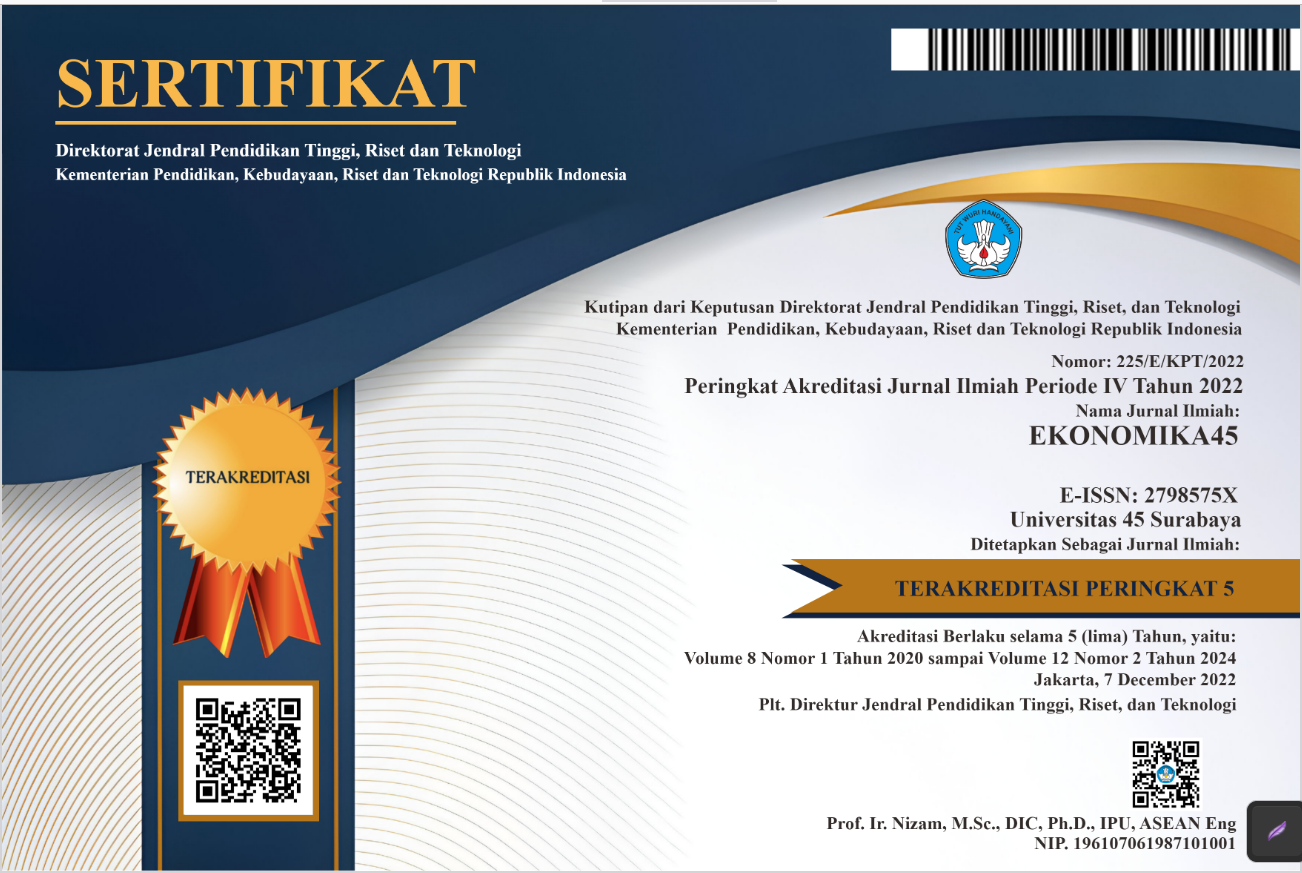Pengaruh Live Streaming dan Diskon terhadap Perilaku Impulsif Konsumen Muslim pada Pengguna Tiktok Shop di Kabupaten Bone
DOI:
https://doi.org/10.30640/ekonomika45.v12i2.4527Keywords:
Discount, Muslim Consumer, Live Streaming, Impulsive Behavior, TiktokAbstract
This study analyzes the effect of live streaming and discounts on impulsive behavior of Muslim consumers on TikTok Shop users in Bone Regency. The purpose of this study was to test whether live streaming and discounts affect impulsive behavior of Muslim consumers on TikTok Shop users in Bone Regency. The study used a quantitative method with data collection techniques through questionnaires. The results showed that there was a significant influence between live streaming on impulsive behavior of Muslim consumers on TikTok Shop users in Bone Regency. This is indicated by a p-value of 0.009 <0.05 or a t-statistic of 6.900> 1.661. There is a significant influence between discounts on impulsive behavior of Muslim consumers on TikTok Shop users in Bone Regency. This is indicated by a p-value of 0.000 <0.05 or a t-statistic of 2.616> 1.661. The Big Influence of Live Streaming and Discounts on Impulsive Behavior of Muslim Consumers on TikTok Shop Users in Bone Regency with an R Square value of 0.915, this means that 91.5% of the variation or change in impulsive behavior of Muslim consumers is influenced by live streaming and discounts, while the remaining 8.5% is explained by other causes.
References
Armand, F. (2003). Social marketing models for product-based reproductive health programs: A comparative analysis (Occasional Paper Series). Washington, DC. Retrieved from http://www.cmsproject.com
Bator, R. J., Bryan, A. D., & Schultz, P. W. (2011). Who gives a hoot?: Intercept surveys of litterers and disposers. Environment and Behavior, 43(3), 295–315. https://doi.org/10.1177/0013916509356884
Belair, A. R. (2003). Shopping for your self: When marketing becomes a social problem [Dissertation, Concordia University]. Montreal, Quebec, Canada.
Chain, P. (1997). Same or different?: A comparison of the beliefs Australian and Chinese university students hold about learning. In Proceedings of AARE Conference. Swinburne University. http://www.swin.edu.au/aare/97pap/CHAN97058.html
Hidayati, S. N. (2016). Pengaruh pendekatan keras dan lunak pemimpin organisasi terhadap kepuasan kerja dan potensi mogok kerja karyawan. Jurnal Maksipreneur: Manajemen, Koperasi, dan Entrepreneurship, 5(2), 57–66. https://doi.org/10.30588/SOSHUMDIK.v5i2.164
Kotler, P., & Lee, N. R. (2009). Up and out of poverty: The social marketing solution. Pearson Education, Inc.
Lindawati. (2015). Analisis faktor yang mempengaruhi perilaku ekonomi dan kesejahteraan rumah tangga petani usahatani terpadu padi-sapi di Provinsi Jawa Barat [Tesis, Institut Pertanian Bogor]. http://repository.ipb.ac.id/handle/123456789/85350
LPPSP. (2016). Statistik Indonesia 2016. Badan Pusat Statistik. https://www.lppsp.go.id/index.php/publikasi/326
Norsyaheera, A. W., Lailatul, F. A. H., Shahid, S. A. M., & Maon, S. N. (2016). The relationship between marketing mix and customer loyalty in hijab industry: The mediating effect of customer satisfaction. Procedia Economics and Finance, 37, 366–371. https://doi.org/10.1016/S2212-5671(16)30138-1
Risdwiyanto, A. (2016, Februari 22). Tas kresek berbayar, ubah perilaku belanja? Kedaulatan Rakyat, hlm. 12.
Risdwiyanto, A., & Kurniyati, Y. (2015). Strategi pemasaran perguruan tinggi swasta di Kabupaten Sleman Yogyakarta berbasis rangsangan pemasaran. Jurnal Maksipreneur: Manajemen, Koperasi, dan Entrepreneurship, 5(1), 1–23. https://doi.org/10.30588/SOSHUMDIK.v5i1.142
StatSoft, Inc. (1997). Electronic statistic textbook. Tulsa, OK: StatSoft Online. http://www.statsoft.com/textbook/stathome.html
Downloads
Published
How to Cite
Issue
Section
License
Copyright (c) 2025 EKONOMIKA45 : Jurnal Ilmiah Manajemen, Ekonomi Bisnis, Kewirausahaan

This work is licensed under a Creative Commons Attribution-ShareAlike 4.0 International License.









